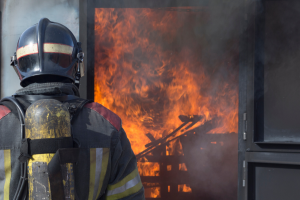
The Different Types of First Aid
First aid can be applied in all sorts of situations and workplace-specific first aid is generally the most specialised because the types of injuries can vary depending on what people do. First aid can also be categorised as:
- basic when dealing with minor injures and ailments
- emergency when for life-threatening situations or when very serious injuries have occurred.
Whatever type of first aid you administer, always check the location for danger before you start. You can’t deal with a patient if you are injured and hazards may cause further injuries if present. If there are dangers, move to somewhere safer if possible or try to reduce the hazards.
First aid is primarily concerned with the ‘Three Ps’ — preserving life, preventing further injury and promoting recovery. Within this, there are different types of first aid that can apply.
1. Performing CPR
Cardiopulmonary resuscitation is vitally important since it restores breathing and blood circulation when a person is unresponsive. However, it requires special training if it is to be done effectively.
2. Dealing with Allergic Reactions
These occur when a person is sensitive to certain substances, such as some foods, drugs or bee stings. They can be life-threatening and are best treated with an EpiPen that injects adrenaline to subdue the effects. It’s important the patient remains calm, is not given anything else and does not have restricted breathing.
3. Treating Fractures
A broken bone is not always obvious but, if suspected, the area needs to be stabilised and elevated if possible. A cold pack should be applied and an anti-inflammatory drug, such as ibuprofen, given.
4. Treating Burns
Minor burns need little treatment and are either first degree burns where only the outer layer of the skin is burnt or mild second degree burns that affect some of the inner layer. Pain relief medication can be given and the person should be kept in the shade with cool water applied followed by moisturiser.
Major burns are very serious and include third degree burns that have damaged all the inner skin layer and fourth degree burns that have penetrated all tissues. Professional help is needed for these and so, until it arrives, simply cover the wound loosely to prevent infection.
5. Dealing with Heat Exhaustion
This is usually caused by exposure to high temperatures combined with a lack of water and too much activity. It causes sweating, dizziness, nausea, headaches, a weak pulse and muscle cramps. Affected people must be moved into the shade, given plenty of water and cooled down by applying a cold cloth to their forehead.
6. Dealing with Hypothermia
Prolonged exposure to cold temperatures can cause the body’s temperature to drop below 95 degrees Fahrenheit and cause hypothermia. Symptoms include a weak pulse, shivering, slurred speech, poor co-ordination and, eventually, loss of consciousness. Treatment should be gentle and includes the removal of wet clothing, moving to a warm area, applying heat packs and giving warm fluids.
7. Treating Sprains
These are not serious and will usually heal unaided. However, the condition will be improved by applying ice to reduce swelling, elevating the injured limb, keeping it compressed and avoiding putting strain on it.
8. Treating Cuts and Scrapes
The main aims are to stop the bleeding and prevent infection. Apply gentle pressure if necessary, until the bleeding stops, then gently clean the wound with water and apply an antibiotic before covering it with a bandage. If the wound is really deep, simply apply pressure then cover the wound loosely until help arrives.
Depending on your job and activities, you need suitable first aid training to meet all eventualities. We can provide a range of first aid training courses, from basic to advanced, that can also be tailored for particular industries and so are suitable for all.

